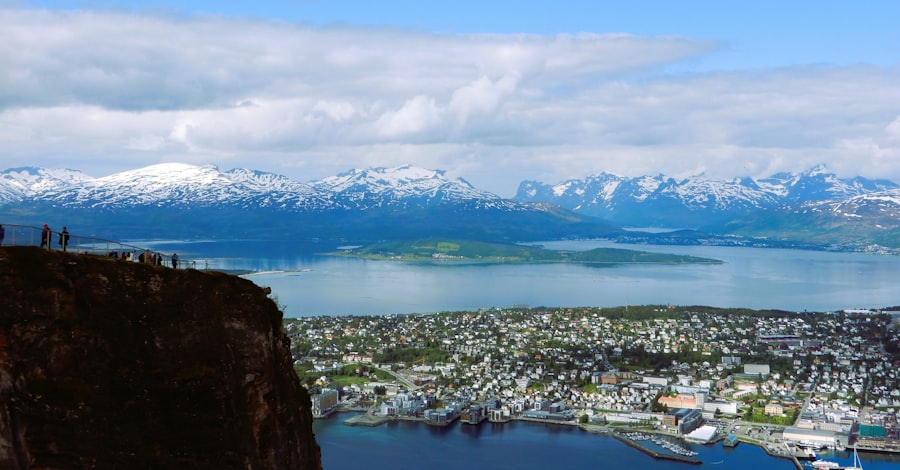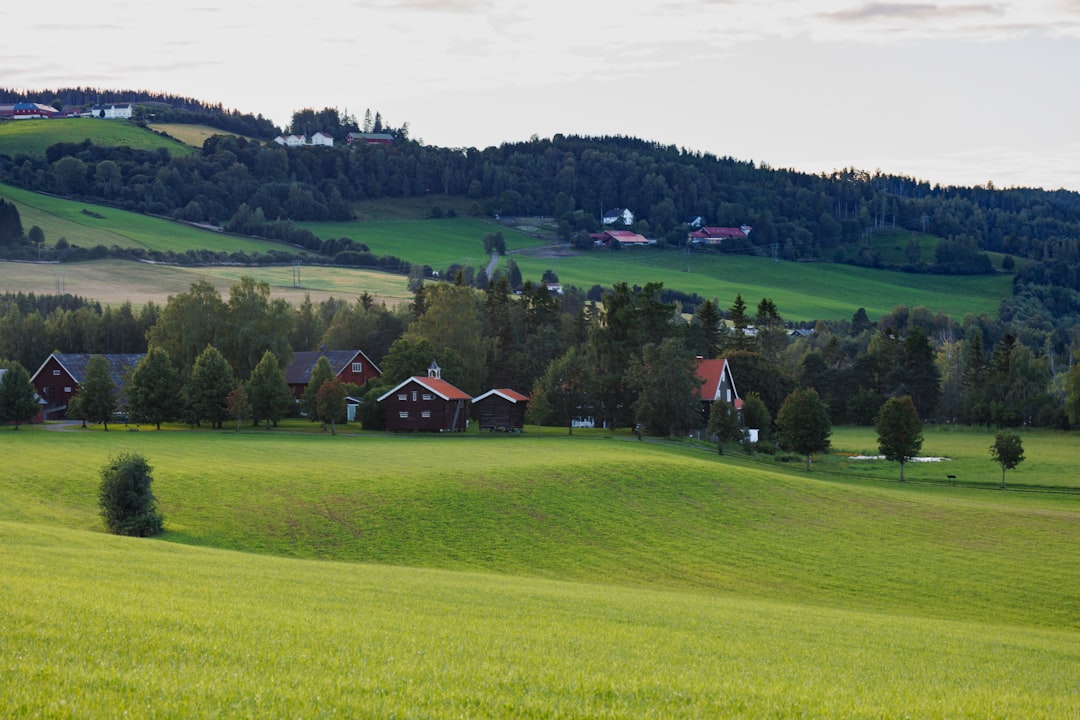Norway, a land of stunning fjords and rich cultural heritage, boasts a plethora of holidays and traditions that reflect its unique history and the values of its people. The Norwegian calendar is punctuated with celebrations that not only mark the passage of time but also serve as a means of preserving the country’s folklore and customs. From the enchanting winter festivities to the vibrant summer solstice celebrations, each holiday is steeped in meaning and often accompanied by age-old rituals that have been passed down through generations.
The significance of these holidays extends beyond mere celebration; they are a reflection of Norway’s identity, showcasing the deep connection between the people and their natural surroundings. The changing seasons play a pivotal role in shaping these traditions, with each festival embodying the spirit of the time of year it is celebrated. As we delve into the various holidays observed in Norway, we will uncover the rich tapestry of customs that define this Nordic nation. Book Your 1-Hour Relocation Strategy Session
Summary
- Norwegian holidays and traditions are deeply rooted in the country’s history and culture, with each celebration having its own unique customs and significance.
- Christmas in Norway is a time of festive decorations, traditional foods, and gatherings with family and friends, with the highlight being the Christmas Eve celebration.
- Easter in Norway is marked by a blend of religious and secular customs, including decorating eggs, going on mountain hikes, and enjoying traditional Easter meals.
- The 17th of May, Norway’s National Day, is a joyous occasion filled with parades, flag-waving, and traditional costumes, celebrating the country’s independence and constitution.
- Midsummer (St. Hans) in Norway is a time for bonfires, outdoor gatherings, and folklore-inspired celebrations, marking the summer solstice with music and dancing.
Christmas in Norway: Traditions and Celebrations
Christmas, or “Jul” as it is known in Norway, is one of the most cherished holidays in the country, marked by a blend of Christian and pagan traditions. The festive season begins with Advent, where families light candles and prepare for the arrival of Christmas. One of the most beloved customs is the decoration of the Christmas tree, which is often adorned with handmade ornaments, candles, and traditional Norwegian decorations.
The tree serves as a focal point for family gatherings, where stories are shared, and memories are created. On Christmas Eve, families come together for a sumptuous feast that typically includes dishes such as ribbe (pork ribs), pinnekjøtt (dried lamb ribs), and lutefisk (dried fish). After dinner, it is customary to exchange gifts, a practice that adds to the excitement of the evening.
As midnight approaches, many families attend church services to celebrate the birth of Christ. The warmth of family bonds and the spirit of giving permeate the air, making Christmas a truly magical time in Norway.
Easter in Norway: Customs and Festivities

Easter, or “Påske,” is another significant holiday in Norway, celebrated with a variety of customs that reflect both religious observance and seasonal change. The festivities begin with Palm Sunday, which marks the start of Holy Week. In many regions, children dress up as “Easter witches,” donning colourful clothing and painting their faces before going door-to-door to collect candy and treats.
This playful tradition adds a whimsical touch to the solemnity of the season. The highlight of Easter in Norway is undoubtedly the long weekend that follows Good Friday. Many Norwegians take advantage of this time to escape to their cabins in the mountains or by the sea, embracing nature and enjoying outdoor activities such as skiing or hiking.
Traditional Easter meals often feature lamb, eggs, and various pastries, including “Kvæfjordkake,” a delicious meringue cake. The combination of outdoor adventures and festive feasting makes Easter a time for both reflection and celebration in Norway.
National Day (17th of May) in Norway: History and Traditions
The 17th of May, known as “Syttende Mai,” is Norway’s National Day and holds immense significance for Norwegians. This day commemorates the signing of the Constitution in 1814, marking Norway’s independence from Denmark. The celebrations are characterised by parades featuring schoolchildren dressed in traditional costumes known as “bunad,” waving flags and singing patriotic songs.
The sight of thousands of children marching through the streets is a heartwarming spectacle that embodies national pride. Festivities extend beyond parades; families gather for festive meals that often include traditional dishes such as hot dogs, ice cream, and cakes. The day is filled with joy and laughter as communities come together to celebrate their shared heritage.
The spirit of unity and patriotism is palpable, making Syttende Mai not just a day of remembrance but also a celebration of Norway’s vibrant culture and history.
Midsummer, or “St. Hans,” is celebrated on the 23rd of June and marks the summer solstice in Norway. This festival has deep roots in ancient pagan traditions, where it was believed that bonfires would ward off evil spirits and ensure a bountiful harvest.
Today, Norwegians gather around large bonfires on beaches and in parks to celebrate the longest day of the year with friends and family. The festivities often include singing traditional songs, dancing around the fire, and enjoying delicious food such as grilled sausages and fresh strawberries. Folklore plays a significant role in Midsummer celebrations, with tales of mythical creatures like trolls and fairies adding an element of magic to the occasion.
As night falls, the bonfires illuminate the landscape, creating a warm and inviting atmosphere that brings communities together in joyous celebration.
New Year’s Eve in Norway: Customs and Superstitions
New Year’s Eve, or “Nyttårsaften,” is a time for reflection and celebration as Norwegians bid farewell to the old year and welcome in the new one. The evening is often marked by lavish parties where friends and family gather to enjoy good food, drinks, and lively conversations. A traditional meal may include dishes such as smoked salmon, cured meats, and an array of desserts.
As midnight approaches, many Norwegians partake in fireworks displays that light up the night sky. It is customary to make noise at midnight to ward off evil spirits and bring good luck for the coming year. Superstitions abound during this time; for instance, some believe that what you do on New Year’s Eve will set the tone for your entire year ahead.
This belief adds an air of excitement as people engage in various rituals to ensure prosperity and happiness in the months to come.
Sami National Day: Cultural significance and Celebrations

Sami National Day is celebrated on February 6th each year to honour the indigenous Sami people of Norway, Sweden, Finland, and Russia. This day serves as a reminder of their rich cultural heritage and contributions to society. Celebrations take place across Norway, particularly in areas with significant Sami populations, where traditional music, dance, and crafts are showcased.
The festivities often include reindeer racing, traditional Sami food such as “bidos” (a hearty reindeer stew), and displays of handicrafts like duodji (Sami handicrafts). The day is not only a celebration of Sami culture but also an opportunity for education and awareness about their history and rights. By embracing their traditions, Norwegians acknowledge the importance of cultural diversity within their nation.
Traditional Norwegian Foods and Dishes for Holidays
Food plays an integral role in Norwegian holiday celebrations, with each festival featuring its own array of traditional dishes that reflect regional flavours and customs. During Christmas, for instance, ribbe (pork ribs) takes centre stage at many festive tables alongside pinnekjøtt (dried lamb ribs) and lutefisk (dried fish). These hearty meals are often accompanied by sides such as sauerkraut or potatoes.
Easter brings its own culinary delights; lamb is a popular choice for festive meals, symbolising renewal and springtime. Sweet treats like “Kvæfjordkake” are also enjoyed during this season. Similarly, during Midsummer celebrations, grilled sausages and fresh berries are staples at outdoor gatherings.
Each holiday offers an opportunity for families to come together over shared meals that not only nourish but also strengthen bonds through culinary traditions.
Folk Dances and Music in Norwegian Festivities
Music and dance are vital components of Norwegian holiday celebrations, with folk traditions playing a significant role in bringing communities together. Traditional folk dances such as “halling” or “springar” are often performed during festivals, showcasing intricate footwork and lively rhythms that reflect Norway’s cultural heritage. These dances are typically accompanied by traditional instruments like fiddles or hardingfele (a special type of fiddle), creating an atmosphere filled with joy and energy.
During major holidays like Christmas or Midsummer, communal singing also takes centre stage as people gather to share songs that have been passed down through generations. These musical traditions not only entertain but also serve as a means of storytelling, preserving history while fostering a sense of belonging among participants.
Norwegian Holiday Destinations: Where to Experience Local Traditions
For those looking to immerse themselves in Norwegian holiday traditions, several destinations across the country offer unique experiences that capture the essence of these celebrations. Cities like Oslo host grand parades on National Day, while smaller towns often feature local festivities that highlight regional customs. The picturesque landscapes provide a stunning backdrop for Midsummer bonfires or Christmas markets filled with handcrafted goods.
In addition to urban celebrations, rural areas offer opportunities to experience traditional Sami culture during Sami National Day or partake in Easter activities at mountain cabins. Each destination provides a glimpse into Norway’s diverse cultural landscape while allowing visitors to engage with local traditions firsthand.
Modern Celebrations: How Norwegians Adapt and Incorporate New Traditions
As society evolves, so too do holiday celebrations in Norway. While many traditional customs remain steadfastly observed, modern influences have begun to shape how these festivities are experienced today. For instance, Christmas has seen an influx of international practices such as Santa Claus figures alongside traditional Norwegian folklore characters like “Julenisse.” This blending of cultures reflects Norway’s openness to new ideas while still honouring its roots.
Similarly, New Year’s Eve has transformed into a global celebration where Norwegians embrace both local customs and international practices like countdown parties or themed events. This adaptability showcases how Norwegians cherish their heritage while welcoming new traditions into their lives. In conclusion, Norwegian holidays are a vibrant tapestry woven from centuries-old customs that reflect the nation’s rich cultural heritage.
From Christmas feasts to Midsummer bonfires, each celebration offers insight into the values that define Norwegian society—community spirit, respect for nature, and a deep appreciation for tradition. As we continue to explore these festivities, it becomes clear that they not only mark significant moments in time but also serve as vital connections between past generations and future ones. To further explore these fascinating traditions or if you’re considering relocating to Norway to experience them firsthand, we invite you to book a One-Hour Strategy Session with the Norway Relocation Group.
This session will provide you with invaluable insights into navigating life in Norway while embracing its rich cultural tapestry during holidays and beyond. Whether you seek guidance on settling into your new home or wish to immerse yourself fully in local customs, our team is here to assist you every step of the way!

